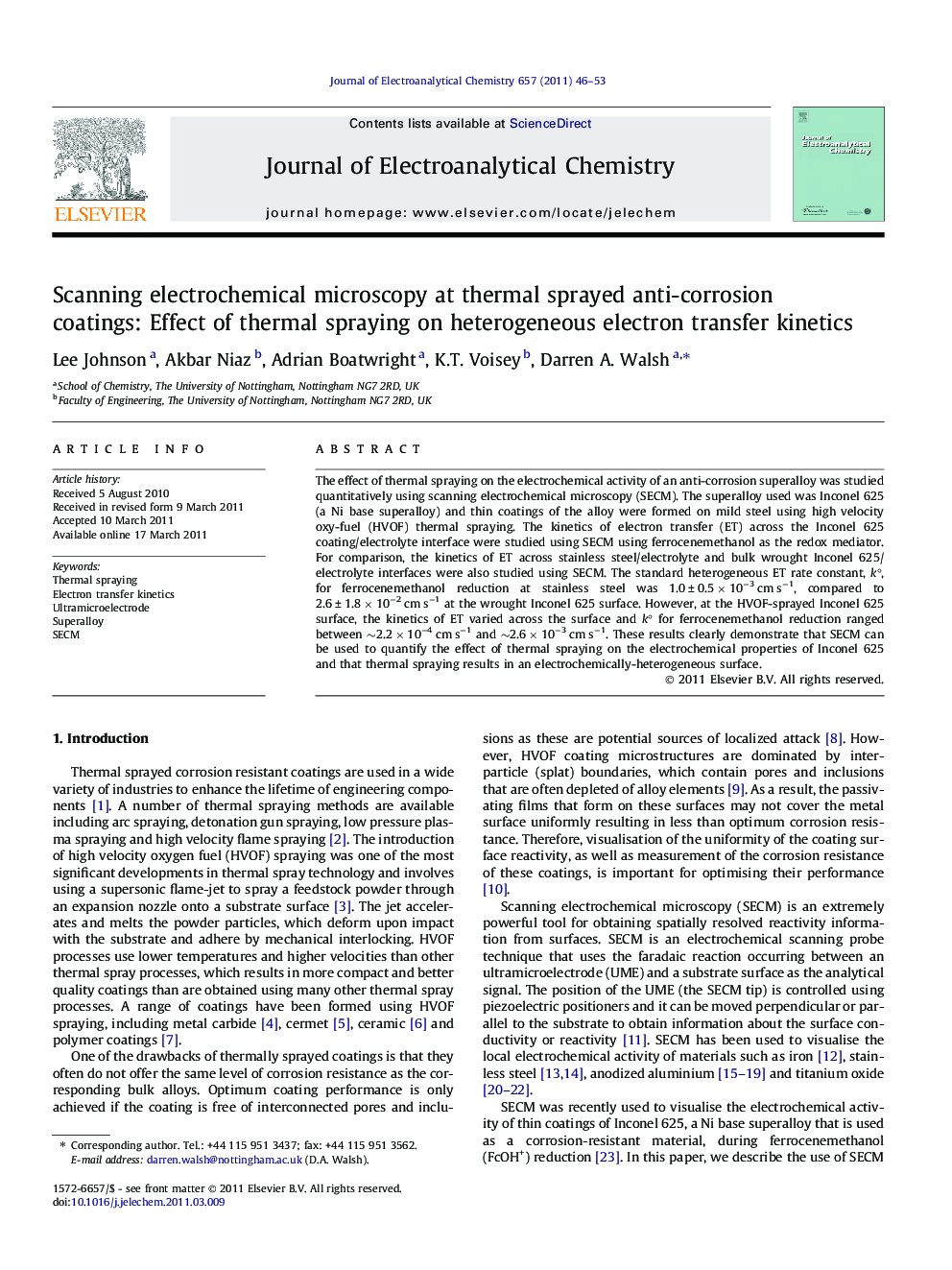| Article ID | Journal | Published Year | Pages | File Type |
|---|---|---|---|---|
| 219521 | Journal of Electroanalytical Chemistry | 2011 | 8 Pages |
The effect of thermal spraying on the electrochemical activity of an anti-corrosion superalloy was studied quantitatively using scanning electrochemical microscopy (SECM). The superalloy used was Inconel 625 (a Ni base superalloy) and thin coatings of the alloy were formed on mild steel using high velocity oxy-fuel (HVOF) thermal spraying. The kinetics of electron transfer (ET) across the Inconel 625 coating/electrolyte interface were studied using SECM using ferrocenemethanol as the redox mediator. For comparison, the kinetics of ET across stainless steel/electrolyte and bulk wrought Inconel 625/electrolyte interfaces were also studied using SECM. The standard heterogeneous ET rate constant, k°, for ferrocenemethanol reduction at stainless steel was 1.0 ± 0.5 × 10−3 cm s−1, compared to 2.6 ± 1.8 × 10−2 cm s−1 at the wrought Inconel 625 surface. However, at the HVOF-sprayed Inconel 625 surface, the kinetics of ET varied across the surface and k° for ferrocenemethanol reduction ranged between ∼2.2 × 10−4 cm s−1 and ∼2.6 × 10−3 cm s−1. These results clearly demonstrate that SECM can be used to quantify the effect of thermal spraying on the electrochemical properties of Inconel 625 and that thermal spraying results in an electrochemically-heterogeneous surface.
► The electrochemical activity of thermal spInconel 625 was studied using SECM. ► Kinetics of electron transfer across the Inconel 625/water interface were measured. ► Electron transfer at Inconel 625 coating was compared with that at bulk Inconel 625 and stainless steel. ► Thermal spraying of Inconel 625 results in electrochemically-heterogeneous surfaces.
